Forgive me Dende, for I have sinned: it has been twelve years since my last anime music video.*
Presenting: “Flashback”
The Background
The last video I worked on was 2010’s “Ain’t No Rest For the Wicked“, a multi-source video that ended up winning “Best Drama/Serious” at Otakon 2010 (after about a decade of entering, our first win!). I didn’t stop editing videos for any particular reason after that; it just kind of happened. The shift into Kanzenshuu there in 2012 and the ongoing heyday of the podcast was certainly a good set of reasons, though, looking back in retrospect. Too much sitting-on-my-butt computer time already. Between that and actual-real-work-work, it was difficult to justify the extra creative energy and computer-usage-pain.
It occurs to me that we actually went an entire computer without making an AMV. After the 2010 video, something inside our computer exploded somewhere there in 2011, and we built a new computer. That 2011 computer lasted (with a couple minor upgrades in the SSD, RAM, and video card department) up through this year in 2022! Heck of a life it had.
And so I basically missed the entire shift to natively working with HD anime footage. I left things in the DVD-ripping, AVIsynth, MJPEG swap files, Lagarith codec days. We were heavily scripting those .avs files, IVTC-ing, working through terrible dot crawl and rainbowing…
… and here we are over a decade later, with most of that same footage having fairly extensive and beautiful Blu-ray remasters, not to mention modern footage simply existing and not really needing any work. Rip it, drag it into Premiere, and go.
It’s wild beyond my wildest dreams of wildness that I ever could have wildly imagined in the wild.
Despite not actually editing any videos over this last decade, we have done the occasional pre-screening judging for contests run by other friends, and every once in a while feel the itch. With a crazy new computer built, and the Otakon 2022 AMV contest submission deadline approaching, I wondered to myself… “Could I make a video in time?”
So. I did. HAH!
The best part was that I didn’t tell anyone I was making the video. (Other than Meri, who it would be considerably difficult to hide from!)
The Concept
I wanted to make something, and while there are certainly some songs still kicking around in a decades-old playlist of “AMV ideas”… I needed a warm-up. Something to experiment with. Something to just test out the technology and see if I still had it in me.
I thought about the fact that there is modern, native, HD Dragon Ball footage these days, which I knew like the back of my hand and could easily futz around with. That sounded fun, but what would the concept even be?
Rather than using something like the full Dragon Ball Super television series (which I didn’t even really care for that much anyway), and rather than limiting myself to something like a single-movie AMV (so Battle of Gods and the like were out), I came up with an interesting way to force a concept onto another concept:
HD footage, but only HD footage that reanimates old scenes.
The first thing that came to mind was the 2011 video game Dragon Ball Z: Ultimate Tenkaichi (“Ultimate Blast” in Japan), which shipped with a dozen or so reanimated cutscenes, all of which I ripped forever ago and just had sitting around. Oh, there’s also the extended edition of Battle of Gods that has some old scenes. Oh man, there’s also the beginning of Episode of Bardock that reanimates some of the Bardock TV special. Whaaaat, there’s also that extended edition opening for Resurrection ‘F’ that beautifully reanimates Goku vs. Freeza along with some other stuff (footage that would end up being a central focus of the video, and the biggest pain in the ass at the same time).
What if I took that all, as well as some other little examples here and there like flashbacks in Dragon Ball Super, and see what I could come up with?
The Song
I had no idea what to use for a song, though. In my experience, this is the absolute worst way to make an AMV: forcing a concept backward into a song. Every other video I’ve ever made has been the opposite, and I’d wager that all of the great editors would back this up: it’s far better when a song is what sparks the footage and concept inspiration, rather than this other way around.
It had to be short, and it had to be punchy; this was probably going to be an action video, after all.
I tried a few different things, but ended up with Asian Kung-Fu Generation’s “Flashback”, the first track on their first full-length album. I had considered making a Japanese MAD-style AMV with it eons ago, but knew I never would go through with that, so it was still up for grabs in my head. Clocking in right under two minutes was a big bonus. It also had very clear verse/chorus separations, with a nice bridge between it all, and then a really big drum pattern ending.
I’m fairly certain this was my first time editing to a non-English language vocal song. It felt very retro, like the old DBZ website community editing days!
The (Primary) Sources
There are a couple little things I’m going to keep a secret (and I’ll be amazingly impressed if anyone finds them… one in particular, for sure), but the rough outline of footage used includes:
- Dragon Ball Z: Battle of Gods (specifically the extended edition’s opening footage)
- Dragon Ball Z: Resurrection ‘F’ (specifically the “Future Trunks Edition” TV broadcast)
- Dragon Ball Super: Broly (just the tiniest bit)
- Dragon Ball: Episode of Bardock (its reanimated Bardock special footage)
- Dragon Ball Z: Ultimate Tenkaichi (cutscenes from this game’s opening theme and story mode)
- Dragon Ball Super television series (a couple reanimated flashbacks)
- Dragon Ball Kai (opening and ending themes animation)
One notable exclusion — and not an intentional one! — is anything from Dragon Ball Heroes. The honest truth is just that I plum forgot. Some of the early base game and Galaxy Mission intro scenes would have been perfect to include… but I just didn’t think of them in time! I considered doing an extra edit on the video after final submission to swap in some of those scenes, but that didn’t feel honest and true to what I had already completed and submitted.
It’s also worth noting that Toei released the first five minutes of Dragon Ball Super: Super Hero on YouTube just a couple days before the submission deadline. I decided not to include anything from that flashback footage because it would have clashed too much with what was already in the video, and would have been a distraction.
There are a couple little exceptions I made for myself regarding the “reanimated old scenes” stipulation, especially as I neared the end of the editing process; these primarily come from Dragon Ball Super theme song animations that call back to past events or imagery from the series, which I felt still worked for the overall motif and concept.
The Edits
There is not a single unintentional frame in this entire video. Even the stuff that doesn’t work quite right? It’s done that way for a reason. And it was all a fair bit of a nightmare. Let me dive into some of that a little further:
The Resolution
1280×720 ended up being the base resolution for the video. It was the lowest common denominator across the board, and also allowed me to use some of the HD 4:3 animation from Kai openings if they were zoomed and cropped appropriately (at roughly 89% they “filled the screen” at 720p) without flip-flopping pillar bars.
The Logo
Perhaps the most laborious set of edits throughout the entire video is the removal of the TV station logo/bug from the Resurrection ‘F’ opening footage. This special intro for the film only ever received a TV broadcast, despite early indications that it would be included on the French “Golden Box” Blu-ray set; this means there is no “clean” footage. (Thankfully that Blu-ray set at least served as the best source for Episode of Bardock, so it wasn’t a complete lost cause.)
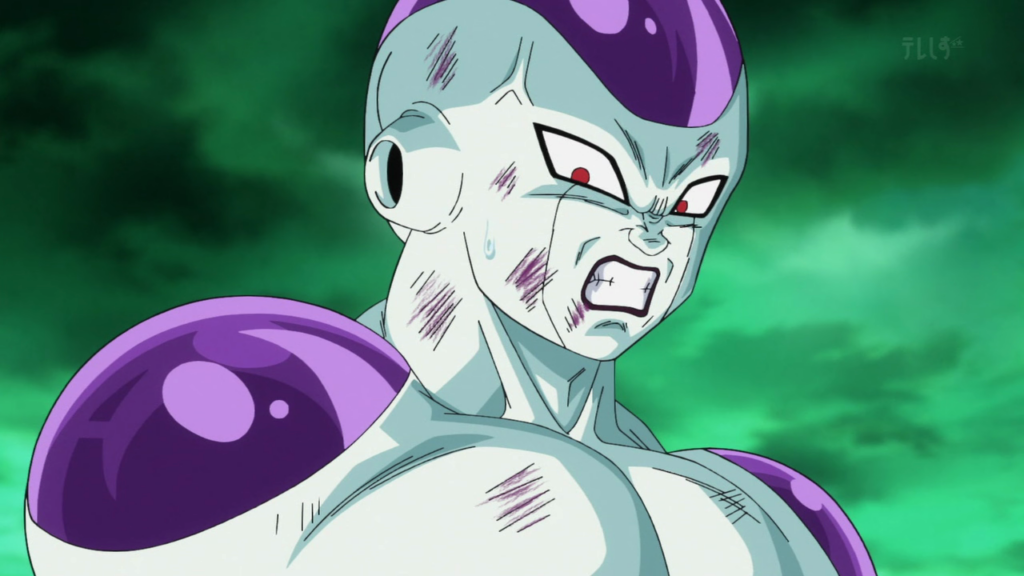
Not only would I personally never release a video with a logo in the corner like that, but most contest rules strictly forbid it. The removals were all a combination of either simple paint-over masks if the lines didn’t move too much, some bits with fairly extensive frame-by-frame redraws, and the occasional throw-my-hands-in-the-air-in-frustration where I just zoomed it off-screen. I think they’re all pretty seamless and you’d never know they were there, unless you look at the upper-right of the first book scene toward the beginning of the video, where there is some 1996-FUNimation-era amateur digital paint work going on. I didn’t go a great job there (lots of frame-by-frame content aware filling), and ran out of time before I could come up with a better solution to deal with the slight zooming and light source changes.
The Editing Ideology
I feel very strongly that when you make an AMV, if you’re not paying attention to how the music is telling you how to edit, then you are just slapping scenes on top of audio… and that’s too basic/reductive. We’re supposed to do more. We’re supposed to entwine these two disparate sources so much that they become one, naturally, as if they were always intended to be together.
That’s why all of my videos have such intentional, deliberate editing styles and sequences within them. Verses are edited in the same way as each other with the same timing and same effects, and likewise goes for choruses. Your opening and ending need to stand out and make their own unique impact, both separate from the rest of the video but also complementing it.
(For a personal epitome of this, check out “Let Me Save You“, our Kimagure Orange Road video from 2003.)
It’s an incredibly difficult balance, and I love to see when other editors recognize these same types of patterns and make videos in a similar way.
I’ll touch on each of these, but that’s exactly how I approached this video, even with it only being two minutes long.
The Opening
Early on I settled on the idea that the Resurrection ‘F’ scenes of Trunks finding the book would set up the “flashback” to the HD/reanimated footage. Initially I had this start at the very beginning of the video, but I liked it better when I removed Trunks entirely, so it wasn’t clear (or mattered at all) exactly “who” the person was… but that then also meant I had less footage to work with, and more measures to fill with footage.
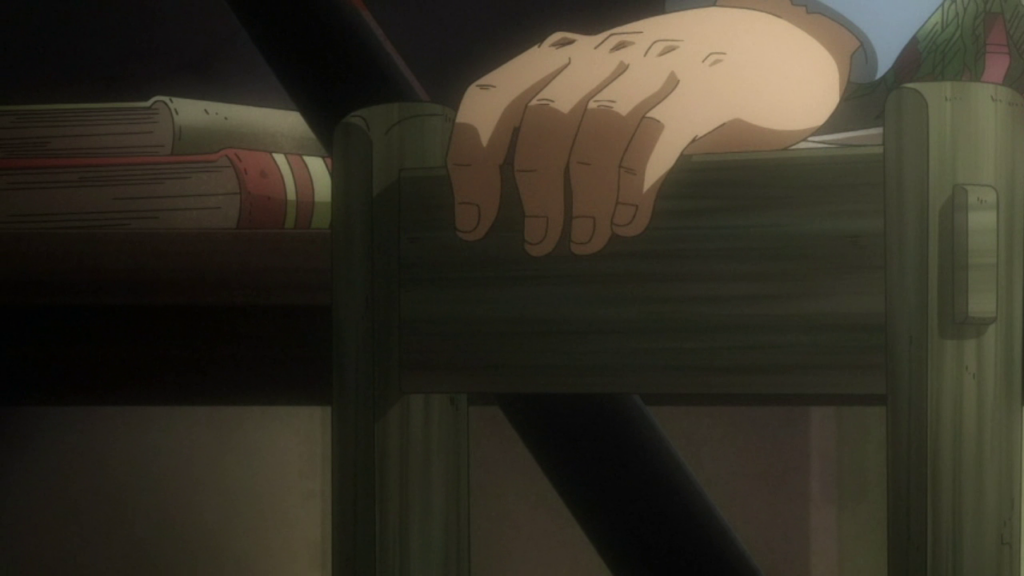
I also had this weird dream vision of some old footage tilted and fading into each other, which is how I ultimately settled on those four opening cuts — they also helped drive home the minor focus around Bardock/Freeza and Goku/Freeza. It’s super basic layering and 3D modeling on the footage, but that it even remotely approaches what I imagined makes me pretty happy.
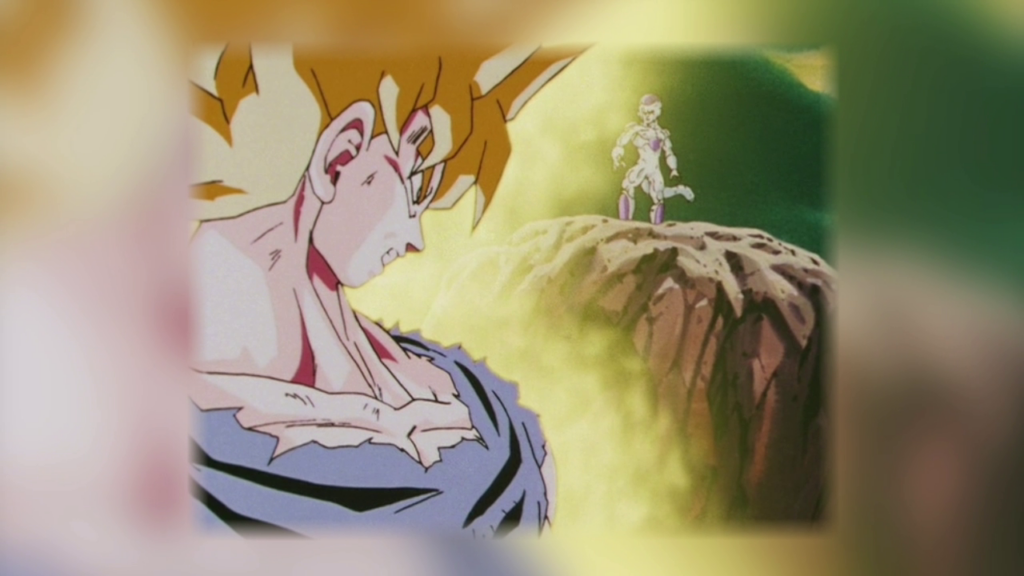
The Verses
Something I know all too well from making AMVs in the past is how little animation there tends to be in these shows. You think you remember animation, but when you scrub through the footage, it’s all just implied through careful direction: the movement isn’t actually there.
And that’s how I wound up with the little “whoosh” effect in the verses. I had initially set it up where there would be an internal action sync on the first guitar hit, followed by a woosh, and wash/rinse/repeat until the chorus, but there was just no goddamn animation in enough of these clips! This allowed me to use a larger base of scenes, while still paying attention to the music itself in terms of the number of edits.
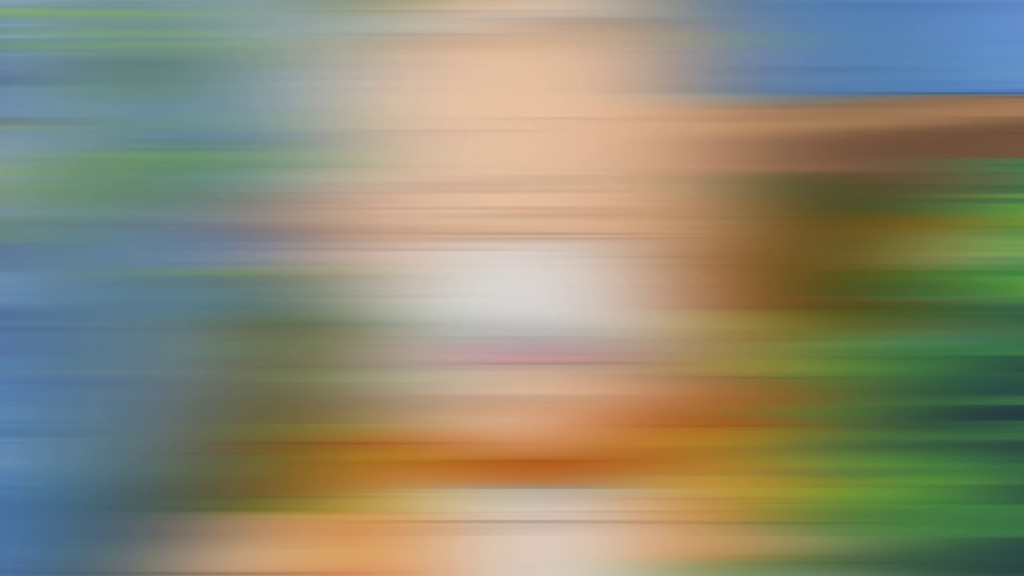
The timing on the whoosh-es was difficult to pin down, but I ended up going with “the whoosh finishes on the frame that the guitar hits”; that felt most natural as I shifted them around the timeline and watched different combinations of possible timings.
The Choruses
Kinda more like the pre-choruses, actually, I guess…? I don’t know how music works!
The reanimated Goku vs. Freeza footage from the extended Resurrection ‘F’ opening was too good not to put to extensive use, so it pretty organically wound up in these parts of the video. I went for a combination of internal action sync and actual cuts in these parts, letting the footage tell me how it wanted to go.
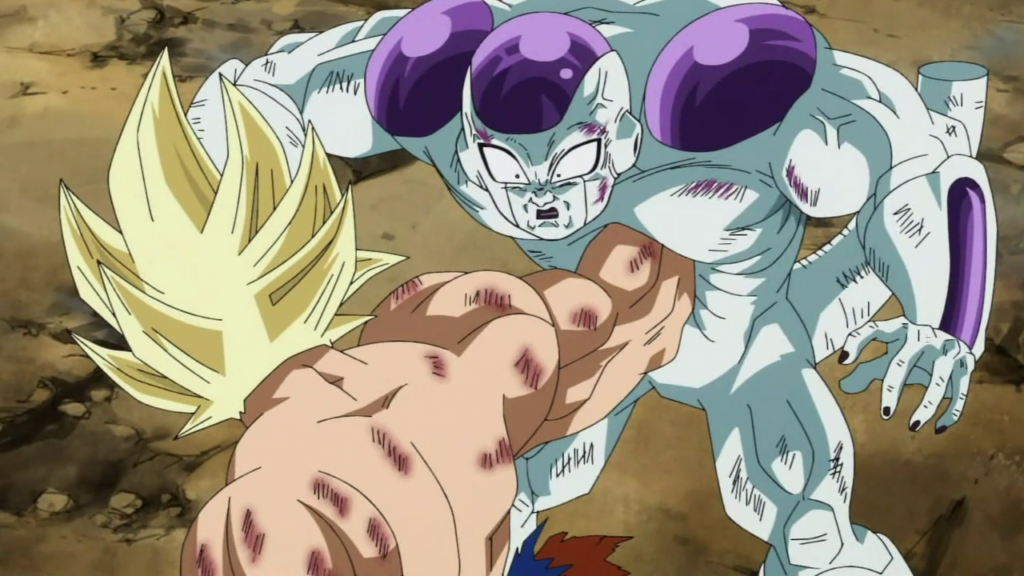
The Instrumental Bridge
I moved these four scenes (Piccolo death, Trunks transformation, Cell explosion, Goku transformation) around over and over trying to find the right flow. I knew I wanted to end on Goku’s Super Saiyan transformation (since it would transition into the fight footage), and the audio really demands those drumroll video cuts. But if I do one, do I have to do all four? The Piccolo one worked great when I threw the edits together, but the Trunks one still doesn’t feel great to me. I think it’s just the terrible drawings from the Super scene? Maybe? And then the Cell explosion part actually sounds different in the music, and there’s so much going on in the animation there that it didn’t seem necessary to do the same kind of single-frame drumroll edits…
The whole section’s a little bit of a mess, but them’s the breaks.
The Ending
I knew I wanted to end on a series of very deliberate, intentional, great-looking punches (see also: “My Fist is the Worst Kind of Weapon“).
Hey, turns out that in a giant batch of footage that has less animation than you thought, there are also far fewer good hits than you hoped for!
This then in turn morphed into a few scenes of power-ups, which then transitions (by way of that Freeza lunging forward, which worked with the music there) into the best hits I could find. There were others, but I considered any I found and didn’t use them for a very specific reason (whether it was a lack of extra content frames on one or both sides of the hit, or some in the Ultimate Tenkaichi opening that weren’t CaNoOnN!!! like Trunks fighting Ginyu folks).
Overall it’s a pretty decent ending, and I like the imagery of Goku being punched in the face so hard that it literally flashes back to the beginning of the series.
The Footage Usage
I honestly expected to use the ever living hell out of the Ultimate Tenkaichi footage… but there’s no goddamn animation in it! Every once in a while there’s something good like the Great Ape Vegeta transformation, but everything else is just lips flapping and cardboard cutouts sliding around the screen. It’s the perfect example of what I mentioned earlier with the verses, where the animation is all implied through direction.
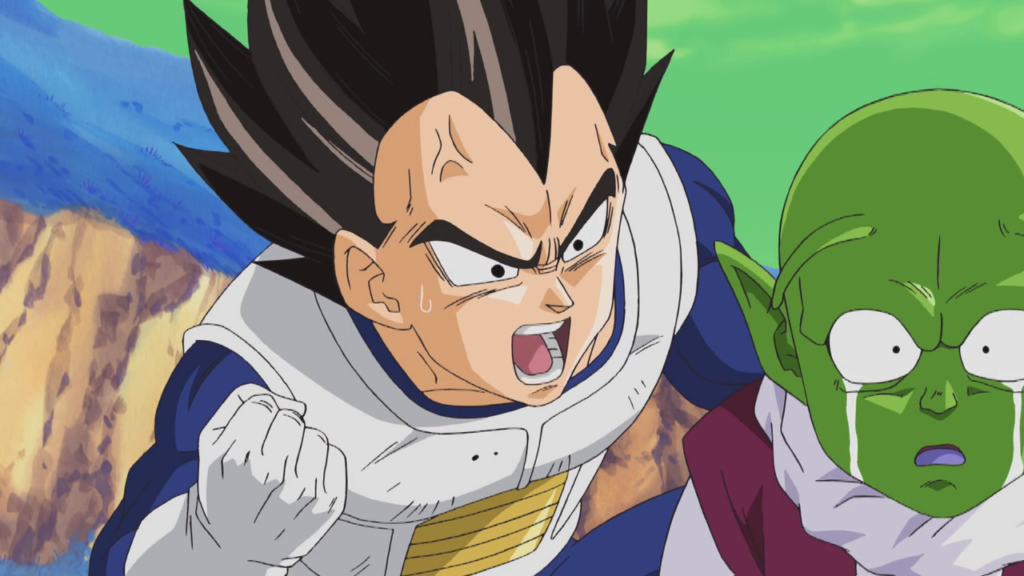
This gave me a pretty good stretch of minor panic attacks over the lack of footage I had available, which led me into picking apart the XENOVERSE opening (whoops, also no real animation!) and looking back into the Super TV series for additional reanimated scenes (whoops, also no real animation yet again!).
The very last scene I placed in the video was the Super ending theme #10 footage of little Goku (with the water drop) and the hand reaching toward the sky (a Mike and Meri classic AMV scene choice) transitioning into the Goku vs. Freeza Kamehameha. Until that point, I had no idea how to narratively transition from the Bardock footage into the Goku vs. Freeza fight.
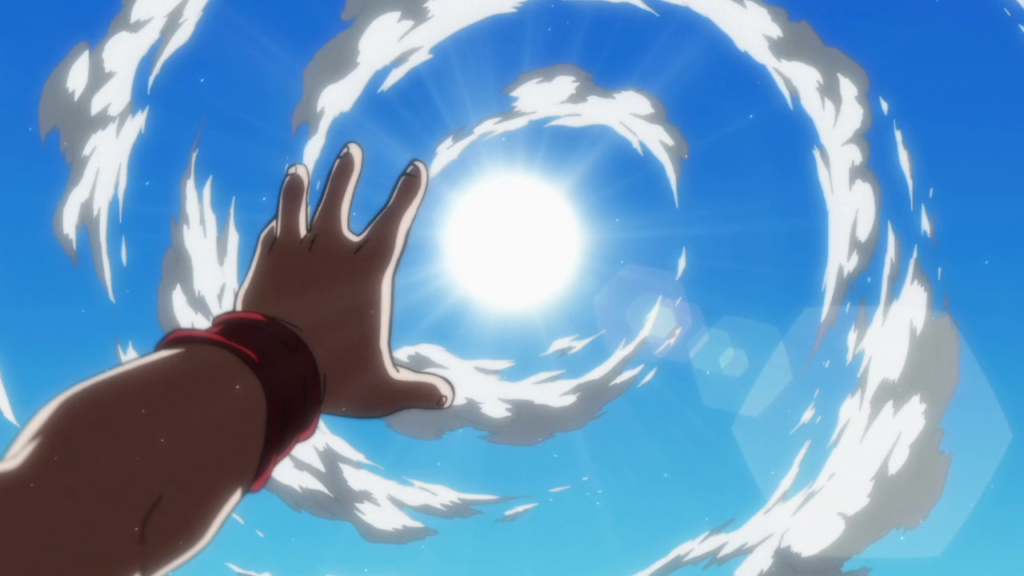
I had actually already placed the hand reaching as the final drumroll, but you can’t really tell and it works here so well, so I didn’t mind using that same footage twice in the same video. Check out how the sun transitions into the ki gathering! Huh? HUH?! Right?! (I wanted to perfectly line them up circle-for-circle, but the amount of zooming necessary to do that made it look crummy and far too off-center.)
I wanted to do more scenes like the Bardock vs. Freeza bit, where I juxtaposed the Episode of Bardock version against the Dragon Ball Super: Broly version, but this particular video just didn’t end up going that way. It’s something I would still love to try again some day.
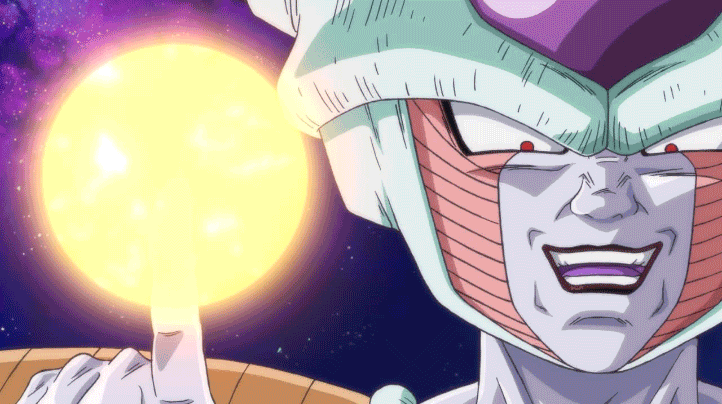
The Final Export
By the time I entered the scene in 2000, it was all digital editing on computers and the final delivery was a digital file (generally an MPEG-2); no two-VCR editing for me, no sir.
That said, I spent the majority of my AMV years editing on a CRT monitor with a final product that would screen on a CRT (or projector) through an analog connection, interlaced at standard definition.
Making precise to-the-frame edits in this new video was a goddamn nightmare.
Things felt different on the Premiere timeline than they did in the exported video on the same computer than they did on a 1080p TV than they did at the contest pre-screening, all with different connectors (HDMI vs DisplayPort), display refresh times, room audio acoustics, etc.
I hate it.
If something feels “off” in the final video — wherever it is that you’re watching it — please know that it’s not intentional. I wanted it to feel perfect. Every whoosh, every flash, every drumroll, every cut… they’re all supposed to feel perfect, and they goddamn don’t.
I really, really hate it.
Welp
Didn’t make the cut for the Otakon 2022 contest. Bummer. Pretty hard gut punch and eye-opener after easily making it in from 2004-2010 each time I submitted, and half-expecting to just waltz in with anything here and at least scrape by into the contest.
But I also framed this video as an experiment for me to take on, a sort of warm-up coming back to the game, with a video concept that was incredibly forced and rather stifling.
So with that said, I dunno that this experiment really worked out, but it certainly got me reacquainted with the editing process. The bug has bit! I have some older ideas I would definitely love to try to get back to, and I also want to keep experimenting with random Dragon Ball footage in new and different ways. I don’t know that I’ll ever make anything quite like our golden era of dramatic narrative videos, but who knows what the future holds?
Special Thanks
Doug — For keeping the spirit of Dragon Ball AMV sub-culture alive all these years
Randy — For ripping some Kai themes I didn’t have, without knowing this is what it was for
Ajay — For helping me track down some of the Super flashbacks, without knowing this is what it was for
Meri — For the review and encouragement and overall secrecy
Bryce — For pretending he didn’t know I was making this even after Meri all but certainly let the cat out of the bag
Vic — For the perfect text message response after letting him know I submitted a video
*This is technically correct in terms of released products intended to be actual AMVs. I edited a roughly one-minute music video with Saiyan/Tsufruian-related footage and Kikuchi music for the “Bardock+” project I started working on back in 2011, meant to act as a sort of interstitial between some of the other edits. This entire project was on a computer that then exploded, was then replaced, and now it’s been over a decade since I’ve attempted to resurrect that project. I really should. It was almost done!


Be the first to comment